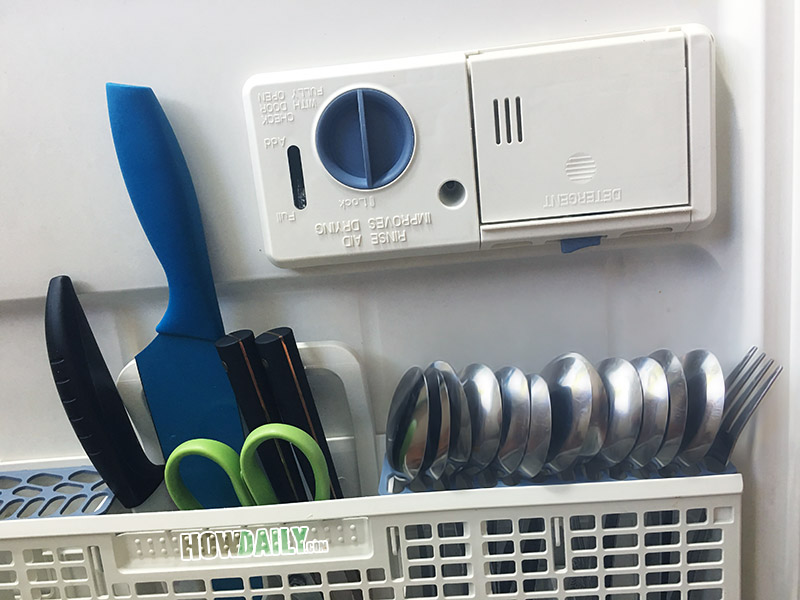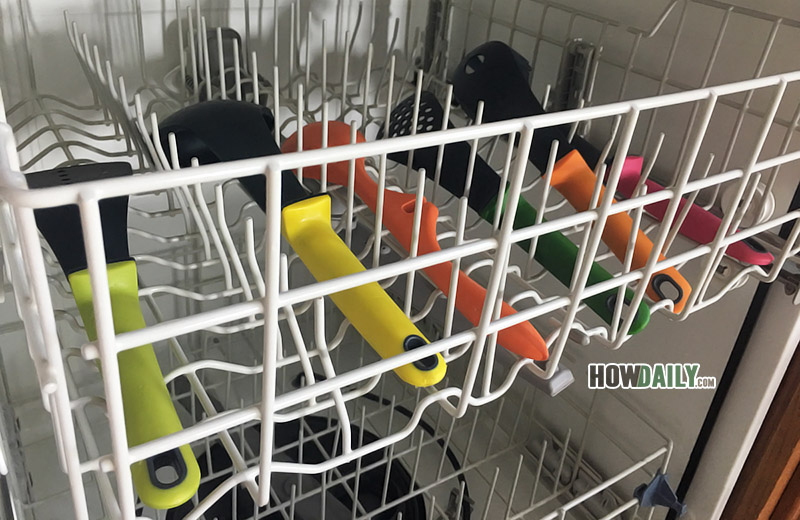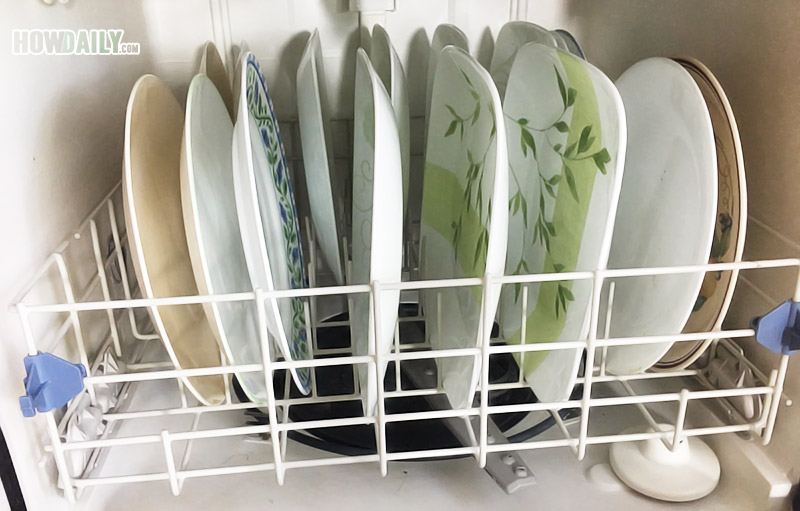Loading a dishwasher may seem simple enough on the surface, but there is a right way and a wrong way. There are some variations, depending on the dishwasher design; however, many hard and fast rules apply to all makes and models.
Do Nots
Let’s get the “do nots” and “nevers” out of the way right off the bat:
- Never just stuff the dishes into the dishwasher any way they will fit. The dishwasher will not get them clean and you will end up with stuck-on food residue.
- Never put dishes in the dishwasher that are not dishwasher safe. For instance, some types of plastic dishes should never be put in a dishwasher. They will melt.
- Do not try to stuff too many dishes in when loading a dishwasher. If there isn’t enough room to load the dishes in the racks the way they should be, do two loads. The dishes will not get cleaned properly if there isn’t enough room between them for the water and soap to reach the dirty surfaces.
Rinsing
Lots of newer dishwashers and improved detergents can effectively clean really dirty dishes, as long as there aren’t huge chunks of food left on them. There are also dishwashers that come equipped with a garbage disposal to handle the bigger chunks. You don’t need to rinse if you have one of these types of dishwashers.
Unless you know that your dishwasher can handle it, scrape the food off and give the dishes a quick rinse before loading a dishwasher. They do not have to be completely clean, just rinse off the excess food.
Forks, Knives, Spoons and other Utensils
The best way to load a dishwasher is to put forks, butter knives and spoons in the silverware basket with the handles down and the part that touches the food up. Arrange them so the forks and spoons are not likely to “nest” or stick together. That way the water and detergent can more easily wash away food and germs.

Sharp knives like steak knives should be put in the silverware basket with the sharp end down and the handle up to avoid injuries when you unload the dishwasher.

Utensils are loaded in the silverware basket with the handle down if the dishwasher design allows for it and/or the utensils are not too big. If the utensils will not fit in the basket, lay them flat on the top rack.
Pans and Bakeware
The proper way to load a dishwasher is to put pans and bakeware on the bottom rack with the dirty sides facing in toward the center and the bottoms facing out. The side that faces in will get sprayed directly with the water and soap.
Do not put cast iron or ceramic pans in the dishwasher. Some aluminum and stainless steel pans can go in a dishwasher. Make sure they are dishwasher safe, first. If you are at all uncertain, just wash them by hand.
Larger flat pans should be loaded in the outer-most slots of the lower rack so that they don’t block the other dishes. Put them along the sides or back so they won’t interfere with the even distribution of detergent from the front of the dishwasher.
Plates and Serving Dishes
The best way to load a dishwasher is to put plates and serving dishes in the bottom rack with only one per slot. Do not double up the plates, even when there seems to be enough room.

Arrange them so that they are on a slight forward slant in the rack. That way the food and water will slide right off into the bottom of the dishwasher.
Place the larger plates and platters behind the smaller ones so that they do not block the water and detergent.
Bowls and Glasses
The proper way to load a dishwasher is to put bowls and glasses in the top rack with the opening facing down. That way the water and detergent will be sprayed up into them then drain down and out toward the bottom.

This is especially important for plastic bowls and drinking cups as they could melt or warp if they are washed in the bottom rack. If they are too big for the top rack, wash them by hand or take your chances. Some plastics will do fine in the bottom rack but there is a good chance they will get too hot.
Larger glass bowls, cups and drinking glasses can go in the bottom rack if there isn’t room on the top.
Leave a Reply